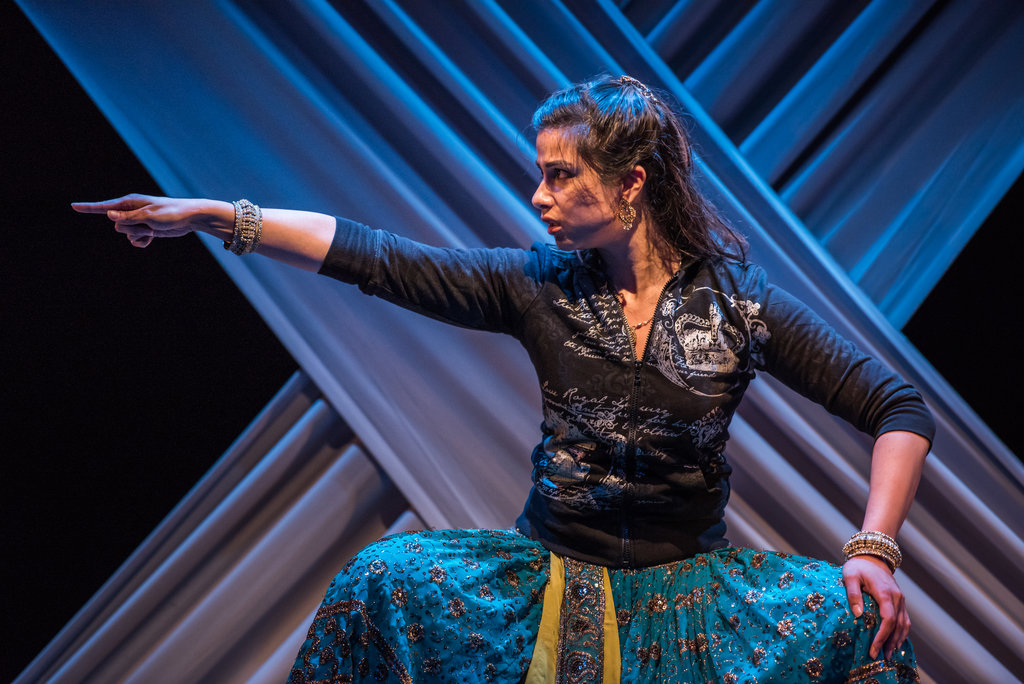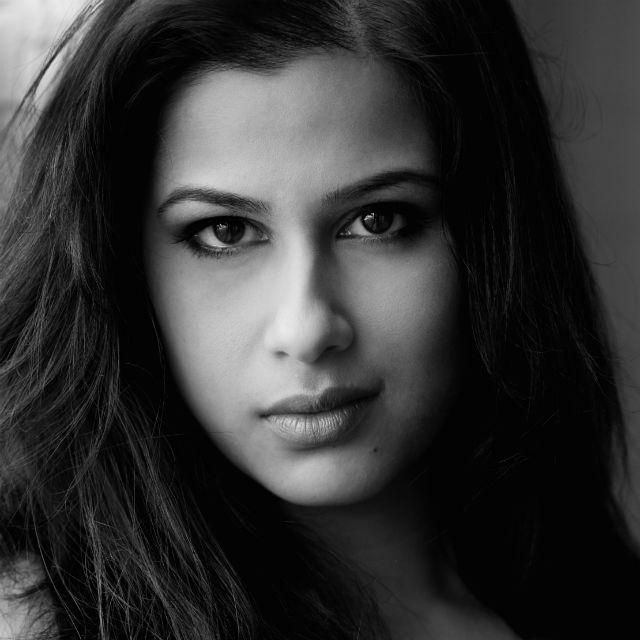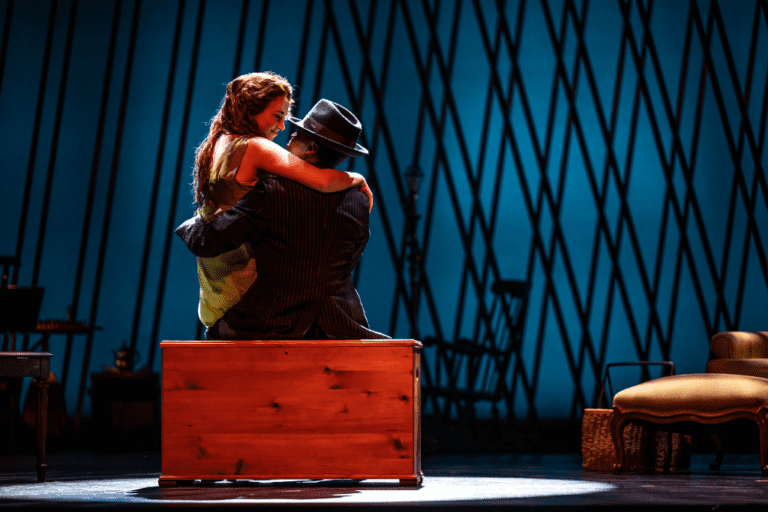What I’ll Never Forget
Note to readers: This piece contains a mention of a traumatic sexual incident.
Here’s something you should know about me: my long-term memory is insanely good. When it comes to things that have happened or things people have said to me, I remember everything.
I remember crying in school this one time in grade ten, and a friend came up and told me, “No one likes sad girls.” I wish I could go back in time and tell my sixteen-year-old self, “Huh. If you think people don’t like sad girls, they REALLY don’t like angry girls.”
Performing Boys With Cars (the first part of the Fish Eyes Trilogy) this past spring at Young People’s Theatre involved embodying a character full of latent anger, but I didn’t realize that it was in fact MY anger until I met with reviewer Jon Kaplan after the show. In the throes of his illness, he patiently waited for me to get out of costume and met me in the house. The first thing he told me was, “I’ve never seen so much anger onstage by a woman.” I guess he saw the expression on my face, because he added, “I mean that as a good thing.”
I’ve long been interested in the private thoughts behind people’s silences and facades. The bharatnatyam dancer’s public persona is someone I had often wondered about. The dancer wears a costume heavy in gold embroidery and head-to-toe gold jewelry. One of the hallmark features of the dance is the “happy face” that’s plastered across the dancer’s face. Part of why I wrote the Fish Eyes Trilogy of solo shows about Indian dance was to explore who the young woman behind the ornate Indian dance costume and “happy smile” actually was, and who she could be. Classical Indian dance hasn’t traditionally made a lot of room for expressing naturalistic, contemporary female anger. And why just blame Indian dance? We live in a culture that celebrates the courage of “the angry young man” while “the angry young woman” is relegated to voices whispering behind her back: “Watch out, she’s a diva.”

Photo by Dahlia Katz
Jon’s words about “the angry woman” pulled back the curtain on how much of my younger self and her underlying anger was the guide to accessing each piece I wrote in the last thirteen years.
I’m going to try to talk about this to the degree I’m able.
A sexual trauma took place thirteen years ago, which took about seven years for me to really move through. The incident occurred with a colleague and we kept in contact for a short time after. It’s that last part that made me think, for a while, that maybe nothing HAD happened. Except that each time I saw him it felt like I was falling face-first into a bed of glass. Making things more difficult, I promised him I wouldn’t tell anyone, because he worried about what would happen to his reputation if anyone found out. But I worried too. Who would believe me even if I did tell anyone? Because he was HIM … and I was just ME. It was that worry that stopped me from telling my parents, who still don’t know what happened to this day.
The problem with having excellent memory is that forgetting is near impossible.
In those early days, I couldn’t feel any rage, much less express it. I would just work out a lot, dance a lot, write a lot, walk a lot. I’m a pretty fast walker; walking fast helps me untangle the mess in my head. Late at night, I would walk up and down Harbourfront—the water reminded me of being near the Burrard Inlet back in my hometown of Port Moody, B.C.—trying to fast-walk away the deep, lurking ache in my chest.
Some nights I would take the subway from end to end—Downsview to Finch—just to have the impression I was moving away from the feeling that followed me everywhere.
I remember going to the Tarragon for a day-long festival of new play excerpts and seeing the guy. I walked away shell-shocked; tissue separating from bone in my sternum. This was a reaction I had somehow accepted was normal. I ran into my agent, who asked if I was okay. I did that thing where I tried to eke out a smile as if to say, “Oh! I’m doing great!” My agent looked at my face, which was numb from holding back “sad-mad” tears, and said, “You have to be careful because people in this business talk. If people always see you like this they’ll start saying, ‘Oh Anita, she’s the girl who’s always sad.’”
Point taken.
I kept riding the subway. I kept fast-walking. And then I added something new. I started making the most intensely flavourful salads—grated cheese, bacon bits, ranch dressing, shredded fried chicken with spinach—but I made that the only meal I ate in a day. After exercising, which involved stuffing three years worth of theatre school movement training into three- to four-hour workout sessions, I would shower and then count down the hours till dinnertime, when I would punish the cheese grater and smash the knife into the chicken before letting myself eat. I had the same amazing salad all summer (with a few permitted spoonfuls of Häagen-Dazs late at night).
A word to the wise: if you’re suppressing your anger and adding extreme hunger to the mix, people generally don’t like being around you. And with no people around, there’s no one to tell your story to except to yourself, in your head.

Photo by Dahlia Katz
This was around the time when I was writing the first drafts of Fish Eyes. I would write, edit, and work on marketing materials from ten at night till five in the morning. I was running on youth, adrenaline, and rage I didn’t know I had. I was completely clueless as to how unhealthy my lifestyle was, chalking it down to “a life in the arts.” The show was an outlet. I took all that one-salad-a-day eating, fast-walking, subway-riding, gym-ratting energy and put it into Fish Eyes.
Then I started performing the play. The initial reviews were pretty brutal, including some commentary about how loud I was. Thirteen years later, I don’t blame reviewers for thinking I was too loud. It was extremely loud inside my head. But I poured my silent loudness into Meena, one of the characters, a dancer. Maybe some part of me knew that Meena was an opportunity to channel those feelings that were keeping me up at night, but it was never a conscious choice. I walked on stage every night, doing my job to the best of my ability. I think I actually believed that I left my own life behind in the wings and joined Meena’s when I hit centre stage. Whatever it was, I know it felt better. For a few hours after lights down, I was lighter. But the heaviness returned the next morning.
Whenever I teach Indian dance choreography I tell students that in the tradition of kathak we put our hands in front of the chest like we’re leaning on a window ledge and looking outside. That window ledge offers us structure.
I remember, during the five-week run of Fish Eyes at Theatre Passe Muraille, the nights where I would lean on the scaffolding of those dances. Those dances held me up.
My favourite dance move is the one-arm spin called a palta. Even after more than twenty years of dancing, I still love the rush of wind I hear against my ear and the feeling like I’m flying when I whip my right arm into a one-arm spin. The Passe Muraille backspace witnessed some of my most aggressive paltas. They were full of rage, yet no one ever complained about the paltas being too loud. Or angry. Or sad.
I would leave every performance of Fish Eyes totally famished—a complete return of appetite. And for more than just salad. My appetite increased naturally and I started going to bed before five in the morning. But it wasn’t just performing that led to this. Audience members would stay back after a show to talk to me, which gave me permission to have conversations about real and sensitive things with new people. Breaking the silence helped get me unstuck.
Having strong male friendships also helped me move forward, from the first director/dramaturg of Fish Eyes, Gregory Prest, to my mentorships with Layne Coleman and Brian Quirt—all of whom encouraged a gentler and more forgiving approach to my life off stage. But perhaps what helped most were my friendships with women. Breaking my silence and having other women “know,” and hearing other versions of a story that I thought was only mine to bear, offered a deep, liberating relief. These women would wrap their arms around me as they witnessed my long and furious silences eventually be released into words and tears.

Photo by Dahlia Katz
And though it’s now so many years later and I’m married to a really good man who refuses to witness one-salad-a-day behaviour… I still remember. With every national debate about consent and “did Jian Ghomeshi or didn’t Jian Ghomeshi,” with every talk with girlfriends where we exchange individual stories of how a strange man told us to “try smiling more”… I remember.
Am I still angry today? In less immediate ways than I was, but yes, I’m still angry. I still have to attend events knowing he’s there, figuring out where he is in the room and making sure I avoid that area for the rest of the night; entire evenings trying to fight against my “sad-mad” face that makes people think I’m a girl no one wants to hire. It’s exhausting. But it’s a way of life and is in essence the reason why I don’t attend as many events as I’d like. Some call me reclusive because of it. Some call me a bitch because of it. I call it protection, and for me, that will always outweigh “bitch.” Perhaps most disarming is that I still can’t name him publicly. That I still fight the echo in my head, “But he is HIM … and I’m just ME.”
I’m not suggesting that there is anything unique about my story. Girl starves herself and tries to run away in response to sexual trauma. And then she pours it into her work as an actor. Yup. That’s familiar. But today, remembering is acknowledging that I’m a part of an angry collective. An uncomfortable angry. An unapologetic angry.
Often we are angry when something we value is disrespected or undermined. And when what we value is ourselves, and ourselves happen to be women, there’s going to be emotional upset. Every time it’s suggested that the only acceptable feeling for a woman to express is happiness, a woman is asked to forget.
And honestly, forgetfulness isn’t a story I’m interested in telling.
Not for stage. Not for life.
Not then. Not now.










Comments